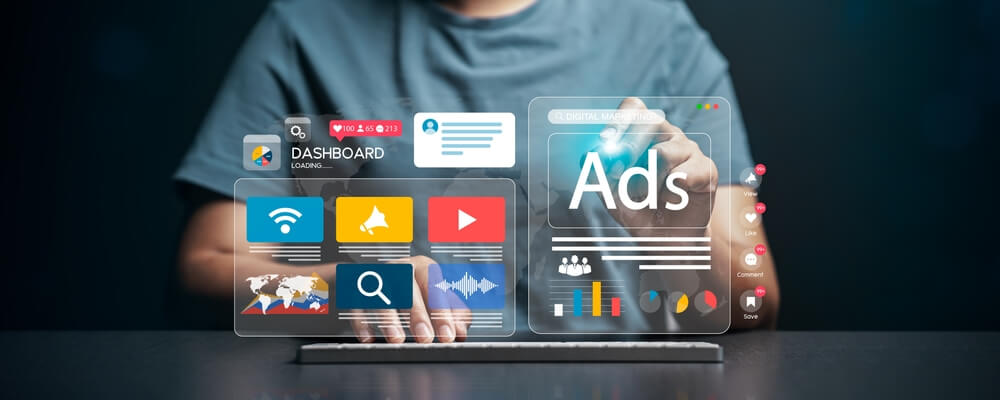Feeling overwhelmed about shifting your marketing strategy from print to digital? You’re not alone—but the good news is that the transition is simpler than you might think. With an upfront effort and the right tactics, you can unlock powerful ways to connect with your audience and drive growth for your business.
In this blog, we will walk you through a list of actionable steps to help you start strong and grow confidently in the digital marketing world.
9 Steps to Switch from Print to Digital
Whether your goals are to increase online sales, boost brand awareness, or expand your customer base, this guide will equip you with the tools you need to succeed.
1. Conduct a Digital Audit
Before you launch into the digital sphere, take a step back to assess your current marketing materials. Review the messaging, visuals, and tone in your print ads and brand assets. Which elements can seamlessly be reused or adapted for online platforms? Consistency is key—your digital audience should feel familiar with your brand, even as you grow in new spaces.
Leverage your print materials to borrow standout headlines or slogans that could double as social media captions, ad taglines, or blog topics.
2. Define Your Goals
What’s your “why” behind incorporating digital marketing alongside your print ads? Having clear objectives in place early on will guide your approach and help you measure success later.
For example, is your main goal to increase online sales? Or perhaps you want to expand your reach by tapping into new audience segments. Once you know what you’re aiming for, you can craft a strategy tailored to achieving those results.
3. Identify Your Target Audience
Your audience is at the heart of every marketing effort, regardless of whether it’s digital or print. Start by examining data from your print campaigns. Which demographics responded the most to your ads? If you’ve been advertising locally, does your target expand beyond your immediate area in a digital setting?
Think about characteristics like:
- Demographics: Age, gender, income level
- Geography: Local, regional, or national focus
- Psychographics: Interests, values, shopping habits
Understanding these details will help you refine your messaging and choose the appropriate digital channels for maximum impact.
4. Choose the Right Digital Channels
Just as you selected specific print publications for your advertising, you’ll want to be strategic when choosing digital platforms. Not all channels serve the same purposes—and not every platform is right for your business. Choose the ones that best align with your audience’s behavior so you can reach them most effectively.
Some of the most effective digital platforms for small businesses include:
- Social Media: Great for engaging with your target audience and building brand loyalty. Choose the platforms where your customers are most active (e.g., Instagram, Facebook, LinkedIn).
- Email Marketing: A cost-effective way to nurture leads and maintain relationships with existing customers.
- Websites and Blogs: These serve as the hub for your digital presence. A well-designed, user-friendly site is a must-have.
- Online Advertising: Use PPC (pay-per-click) campaigns on McClatchy Ad Manager, Google, and social media to directly target your ideal customers.
You want to choose digital platforms that also work well with your digital marketing. Print and digital are both vital components of your marketing mix and can lean on each other accordingly.
5. Repurpose Print Content for Digital Use
Your print assets don’t need to go to waste. You’ve worked hard on these materials, and they adhere to the same brand guidelines as all marketing materials. Digital marketing offers numerous opportunities to re-purpose those materials for a new audience.
Here are some ideas for re-purposing your print materials into digital:
- Turn an informational brochure into a series of visually appealing social media posts.
- Adapt print flyers into digital banners for online advertising.
- Use the content from your print newsletters to build blog posts or email campaigns.
By repurposing existing materials, you save time, extend the lifespan of your content, and maintain a cohesive brand image.
6. Develop a Content Plan
Consistency is one of the cornerstones of successful digital marketing. Maintaining stylistic consistency makes your brand easily recognizable to customers who are newly encountering your brand online.
However, with digital, maintaining a consistent presence is a beneficial way to reach new customers and re-engage previous customers. Utilizing planning tools or content calendars helps you keep track of your content and develop it proactively. This strategy allows you to keep track of the following:
- What type of content you’ll post (e.g., blogs, social media posts, newsletters).
- When you’ll post it (day and time).
- Which channels you’ll use for each piece of content.
Aim for a mix of content types, including educational posts, entertaining stories, and practical tips that align with your business goals.
7. Utilize SEO and Analytics
A successful digital marketing strategy requires the content you create to be found easily online. Search engine optimization (SEO) is the practice of tailoring content so it ranks higher on Google and other search engines so your core customers will be able to find it easily.
Here are some SEO strategies to consider:
- Use relevant keywords throughout your web pages, blogs, and social media captions. Make sure to comprehensively discuss the topic so the keyword naturally appears throughout the content.
- Optimize image sizes and meta descriptions for site speed and click-through rates.
Equally important is analytics software, which will help you track what’s working and what isn’t. Use tools like Google Analytics or social media insights to monitor engagement, traffic, and conversion metrics.
8. Engage with Your Audience
Digital marketing is as much about building relationships as it is about posting great content. Unlike print advertising, digital platforms give you the opportunity to interact directly with your audience.
Ways to engage include:
- Responding to comments on your social media posts.
- Encouraging user-generated content and sharing customer testimonials.
- Sending personalized thank-you emails or promotions to loyal customers.
The more connected your audience feels to your brand, the more likely they are to become repeat customers.
9. Set Up Performance Metrics
The key to long-term success is measuring your progress. Define key performance indicators (KPIs) for your marketing efforts, such as:
- Website traffic.
- Social media follower growth.
- Email open and click-through rates.
- Conversion rates (sales, sign-ups, etc.).
Use the data you gather to refine your strategy continually. Remember, digital marketing is an ongoing process, not a one-time task.
Bonus Tip: Work with Media Experts Like McClatchy!
Feeling unsure about tackling the transition from print to digital on your own? Working with a media partner lets you leverage their expertise so you can grow your brand without worrying about it yourself.
McClatchy, the second-largest media company in the U.S., is uniquely positioned to help businesses like yours make this shift smoothly and effectively. Having helped pioneer the move from print to digital in their own industry, McClatchy has built their Premium Audience Network that connects companies with the right people at the right time across the digital landscape.
Shift from Print to Digital with Confidence
Transitioning from print to digital marketing may seem daunting at first, but with the right steps and support, it’s entirely achievable. Whether you’re aiming to reach new audiences, increase sales, or strengthen your brand’s online presence, this checklist can serve as your foundation.
If you’re ready to take the leap but want an expert partner by your side, McClatchy has the resources to guide you.
Reach out today to explore how McClatchy can help your business shine online!






